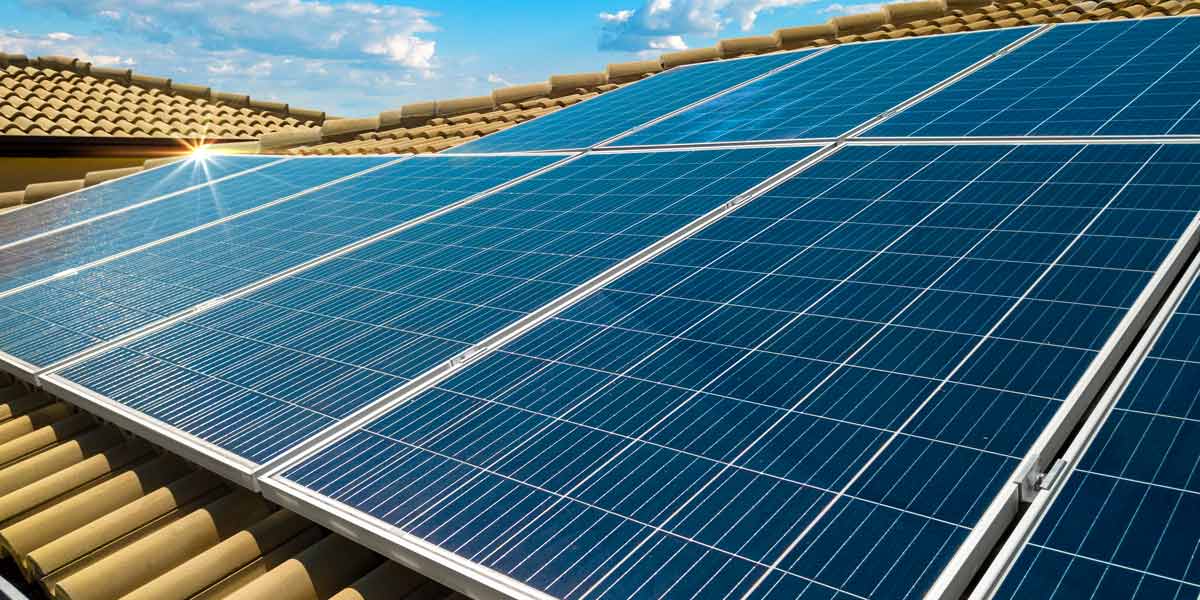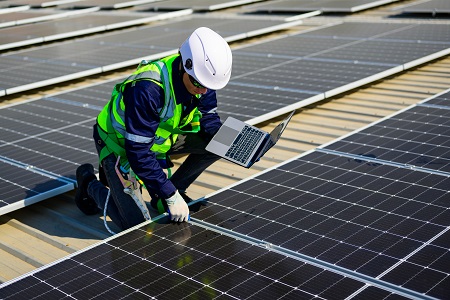DIY Solar Installation PA: Our Company Focuses On The Setup And Management Of Photovoltaic Energy Systems
History and Advancement of Photovoltaic Panel Business
The creation of photovoltaic panel companies can be traced back to the 1800s when Alexandre Edmond Becquerel discovered the photovoltaic impact. Would he have thought of how his discovery would revolutionize the method we harness energy?
Early Beginnings

In 1954, Bell Labs developed the first practical photovoltaic cell. This marked a considerable milestone in the history of solar energy. They were initially used to power area satellites, but who knew this was just the beginning?
Advancement and Growth
- In the 1970s, an energy crisis led to increased interest in sustainable energy sources, consisting of solar energy.
- By the 1990s, improvements in innovation and increasing environmental awareness led to the development of solar panel companies globally.
A New Age
As we got in the 21st century, the solar industry witnessed an exponential growth. The need for tidy and sustainable energy brought about a new era in the photovoltaic panel market.
Fascinating Facts
- The world's very first solar power station was integrated in 1982 in Hisperia, California.
- By 2019, solar power had actually ended up being the world's fastest-growing source of power.
Undoubtedly, the journey of photovoltaic panel companies has been exceptional, hasn't it? The future holds immense potential, with continuous improvements paving the way for a sustainable future. Can we imagine a world powered entirely by solar power?
Moving Forward
Today, photovoltaic panel business continue to innovate, making every effort for more effective and economical solutions. The development of solar power has come a long way, and yet, the journey has simply started.
The Core of Solar Panel Production
Ever question what goes into developing those shiny, sun-loving solar panels? The procedure is as remarkable as the end product (Solar Panels Pennsylvania). High-purity silicon, the main active ingredient in photovoltaic panels, goes through different changes to guarantee its performance and durability
From Sand to Silicon
Crystalline silicon, the backbone of most photovoltaic panels, stems from easy sand. It's a remarkable journey, isn't it? The sand goes through a high-temperature reaction with carbon to form silicon. check here This isn't simply any silicon. The silicon utilized in solar panels is "solar-grade," with a pureness of 99.9999%. It's this pureness that enables the panels to successfully transform sunshine into power.
Ingot Development
When the silicon is pure enough, it's time to form ingots. Picture a large, cylindrical block of strong silicon. How is this accomplished? Through a process called Czochralski process, where the silicon is melted and after that gradually recrystallized. It's a sluggish dance of science, resulting in a strong item that is nearly as pure as the raw silicon itself.
Slicing into Wafers
The ingots are then sliced into wafer-thin pieces, like slicing a loaf of bread. Each piece is a prospective solar battery, waiting to harness the power of the sun. Did you understand that the silicon wafers are only about 200 micrometers thick? That has to do with half the thickness of a human hair! The process requires precision and perseverance, however the result is a set of wafers all set to be become solar cells.
Producing Solar Cells
With the wafer prepared, it's time for the magic to take place. The silicon wafer is 'doped' with other elements like phosphorous and boron to produce an internal electric field. It's this field that enables the conversion of sunlight into electrical power. Complex, isn't it?
Assembly and Quality Control
Solar cells resemble puzzle pieces that come together to form a solar panel. The cells are soldered together in a grid-like pattern, then covered with a protective layer of glass. The final action includes rigorous quality control checks. After all, it's important that every photovoltaic panel carries out at its peak, wouldn't you agree?
Expert Suggestion
Always keep in mind that even the most optimally made solar panel can lose performance due to dirt and particles accumulation. Regular cleansing can considerably enhance your panels' efficiency.
Comprehending the Environmental Impact of Photovoltaic Panel Companies
Ever contemplated the ecological footprint of a solar panel company? Green innovation, such as solar, has changed our energy landscape, but what about the behind-the-scenes impact?
The Production Process: A Double-Edged Sword
The manufacturing process for photovoltaic panels demands a considerable amount of energy. This process, understood as 'em bodied energy', can be deemed a type of 'energy financial obligation'. It's a little like obtaining today's sunlight to power tomorrow's energy requirements. Worry not, the energy repayment time is typically shorter than you 'd believe!
- The energy payback period for solar panels is typically 1-4 years.
- After this duration, the energy produced is basically carbon-free.

Life After Decommission
And what occurs when a solar panel reaches completion of its life expectancy? Can it simply be tossed into the garbage? No, that wouldn't be extremely green, now, would it?
A practical solution is recycling. While solar panel recycling is still in its infancy, it holds a world of capacity. Recycling not only keeps products out of landfills however also minimizes the need for brand-new raw materials.
Responsible Sourcing: More Than A Buzzword
Where does the silicon originated from, you ask? Unfortunately, the industry's need for silicon and rare minerals can cause destructive mining practices. Responsible sourcing is for that reason imperative to lower damaging environmental impacts.
Reduced Carbon Emissions: The Bigger Image
Let's not forget the bigger photo: solar energy substantially minimizes carbon emissions. Once installed, solar panels generate clean, renewable resource, offsetting their initial production footprint.
In brief, the ecological effect of solar panel companies is a complicated issue. However, with responsible practices, the pledge of a cleaner, greener future is well within our grasp.

Financial Performance and Market Share of Photovoltaic Panel Companies
Ever questioned why some photovoltaic panel companies - Affordable Solar Panels PA outshine others in the market? What sets them apart? The key depend on their monetary efficiency and market share
Financial Performance: A Vital Indicator
Financial efficiency plays a pivotal function in the success of any service. For photovoltaic panel business, it's no various. Strong monetary efficiency makes it possible for these business to purchase cutting-edge innovation, research study, and advancement, consequently developing top quality, effective photovoltaic panels.
But how do they attain this? With a focus on expense performance and tactical investments. Business that manage to decrease production expenses without jeopardizing on quality tend to fare better in the market.
Market Share: A Measure of Success
Market share, on the other hand, is a direct reflection of a business's popularity among consumers. A high market share suggests more homeowners are choosing their photovoltaic panels over rivals.
What's the secret dish for getting a bigger market share? It boils down to customer complete satisfaction and brand reputation. Companies that prioritize consumer requirements and maintain a positive brand image are most likely to record a larger share of the marketplace.
- Customer Satisfaction: Photovoltaic panel business that provide dependable products and remarkable customer support tend to have greater client fulfillment rates.
- Brand name Reputation: A strong brand track record is developed gradually through consistent shipment of quality product or services.
Financial Efficiency and Market Share: The Symbiotic Relationship
Surprisingly, the relationship between financial efficiency and market share is not one-sided. They feed off each other. A strong monetary efficiency can increase a business's market share, while a high market share can improve financial performance.
As a photovoltaic panel company, stabilizing these two elements is important for long-term success. A company that neglects either of them might find it challenging to maintain its position in the competitive solar market.
The Takeaway
What does all this mean for you? Whether you're a homeowner aiming to set up solar panels or a financier eyeing the solar market, understanding the financial efficiency and market share of photovoltaic panel business is important. They are essential indications of a company's health and potential for future development.